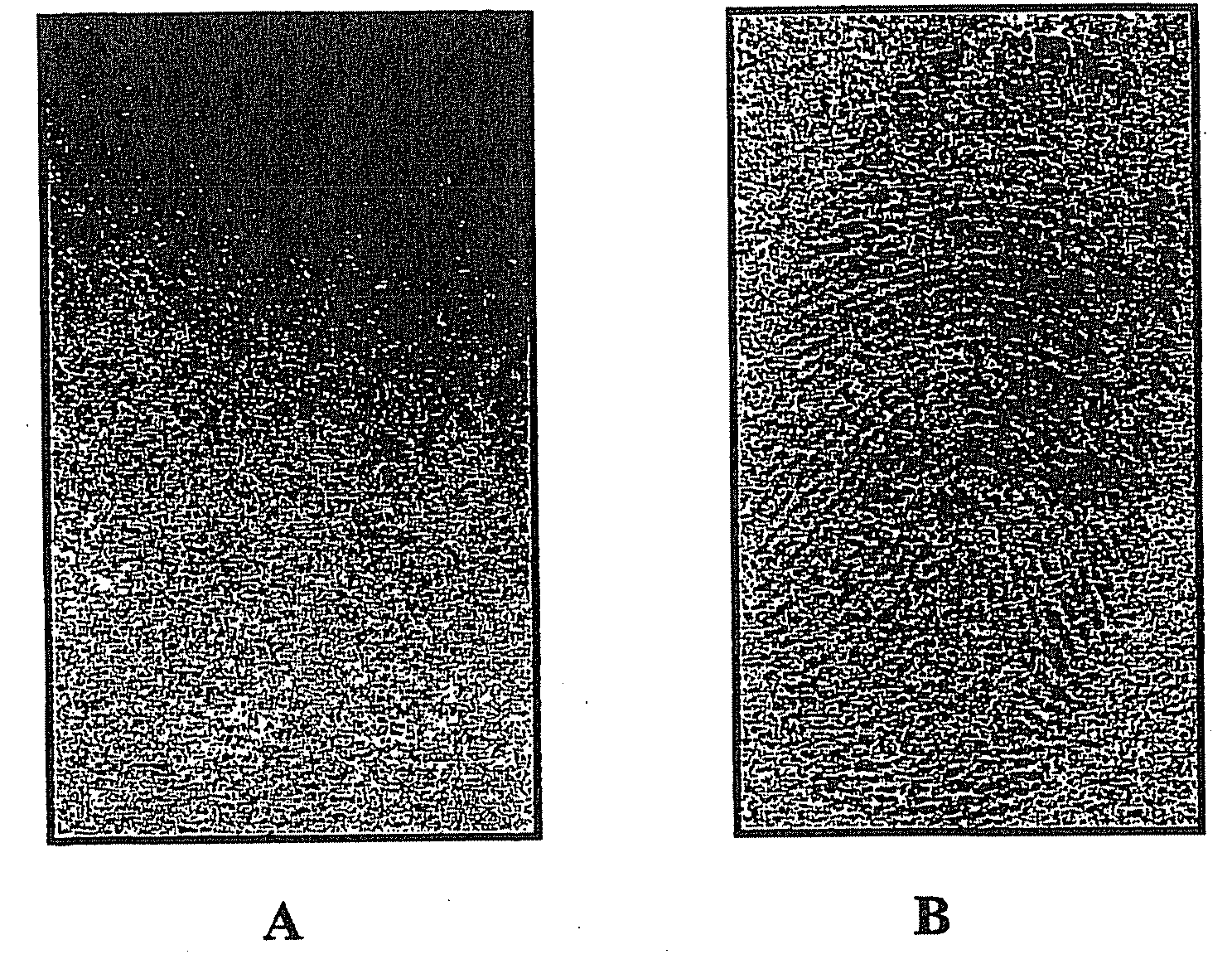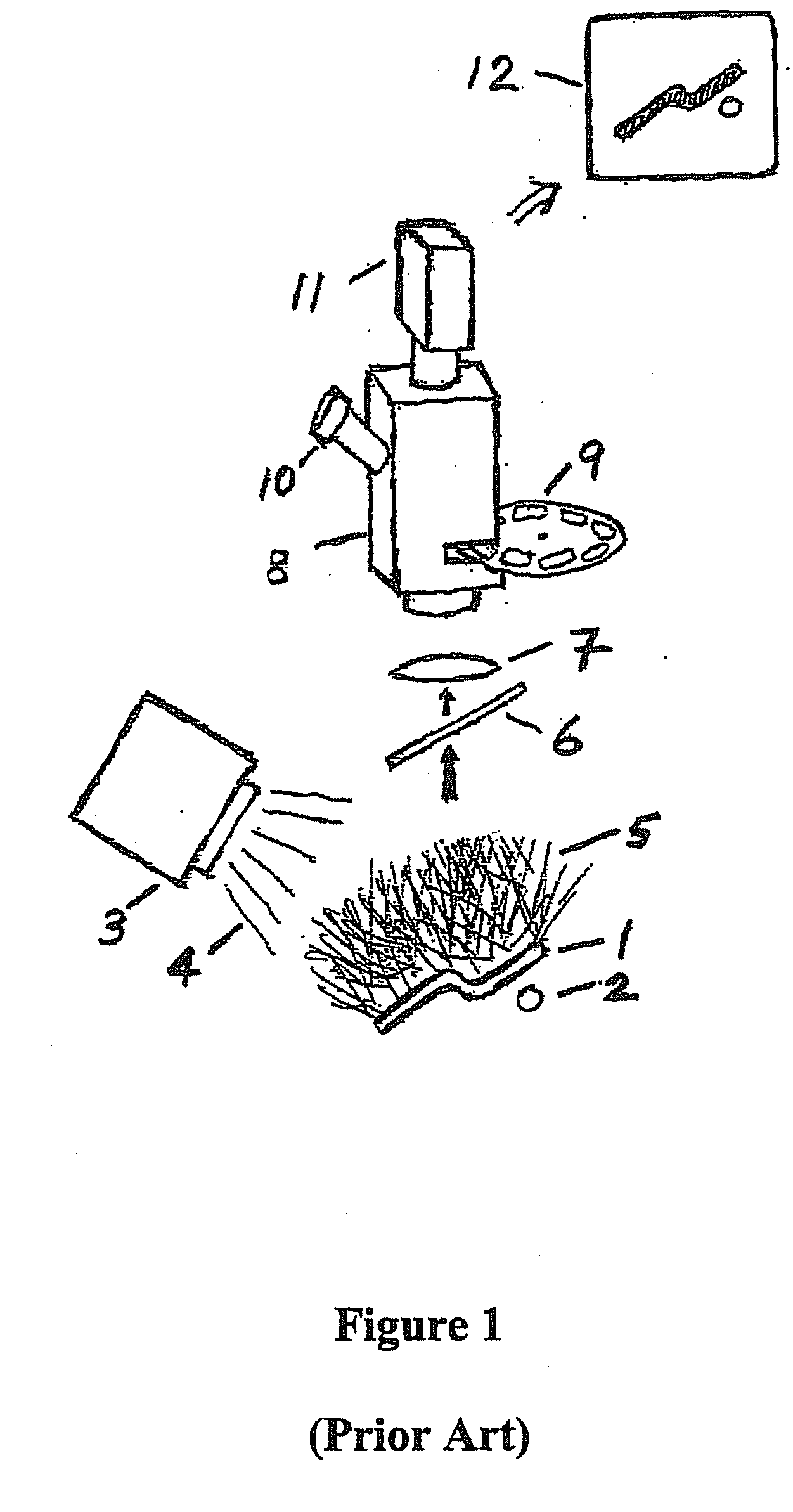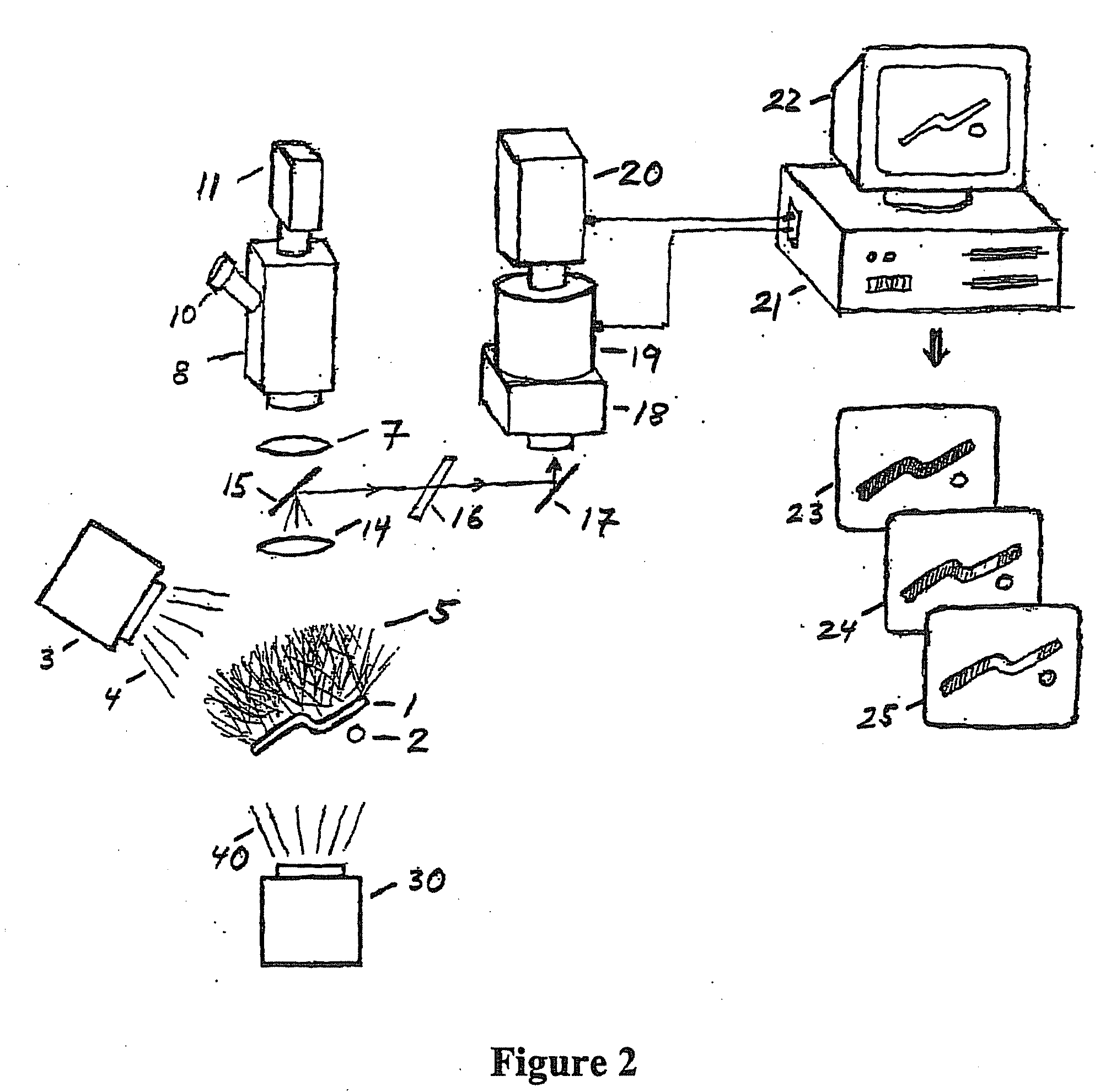Method for improved forensic analysis
a forensic analysis and multi-view technology, applied in image enhancement, instruments, computing, etc., can solve the problems of difficult interpretation or confidence of graphs by other non-experts, extreme sensitive methods, and limited use materials, and achieve the effect of providing additional clarity over the single snapshot imag
- Summary
- Abstract
- Description
- Claims
- Application Information
AI Technical Summary
Benefits of technology
Problems solved by technology
Method used
Image
Examples
Embodiment Construction
[0046]FIG. 2 shows a schematic of the multi-view forensic scope of the present invention. The scope of the present invention consists of multi-view optical train 18, electronic view selector 19 and image sensor 20. Multi-view optical train 18 accepts the sample light and matches its spatial characteristics to electronic view selector 19, the output of which is captured by image sensor, 20. Mirrors 15 and 17 direct radiation which is emitted, scattered or reflected from specimen 1 into the multi-view scope. An optional intermediate filter 16 can be used to filter out certain undesirable components from the scattered, emitted or radiated radiation to optimize the performance of the multi-view optical train 18. Computer 21 controls electronic view sensor 19 and collects data from image sensor 20 for storage and processing. Images of the processed data are rendered on display 22. The multi-view scope configuration shown in FIG. 2 allows for sample viewing with a conventional forensic sc...
PUM
 Login to View More
Login to View More Abstract
Description
Claims
Application Information
 Login to View More
Login to View More - R&D
- Intellectual Property
- Life Sciences
- Materials
- Tech Scout
- Unparalleled Data Quality
- Higher Quality Content
- 60% Fewer Hallucinations
Browse by: Latest US Patents, China's latest patents, Technical Efficacy Thesaurus, Application Domain, Technology Topic, Popular Technical Reports.
© 2025 PatSnap. All rights reserved.Legal|Privacy policy|Modern Slavery Act Transparency Statement|Sitemap|About US| Contact US: help@patsnap.com



